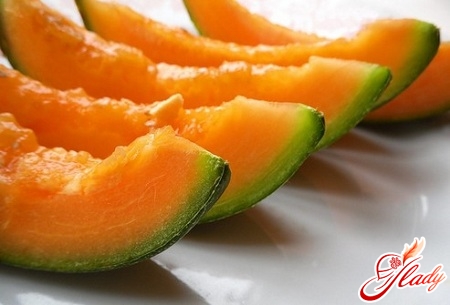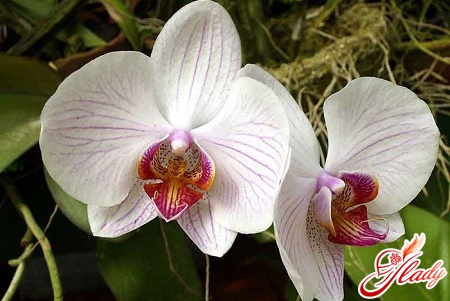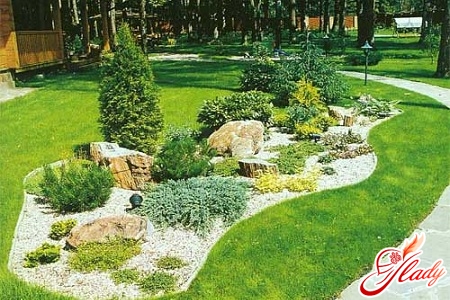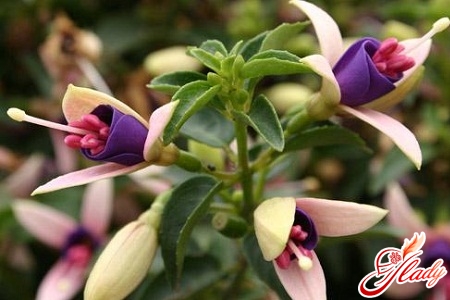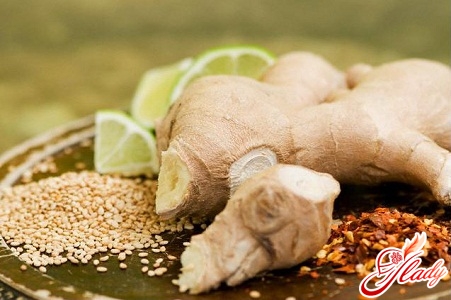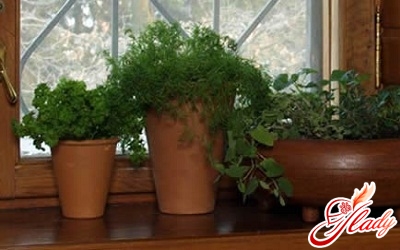 Virtually all diseases in Kalanchoe appeardue to violation of the conditions of detention. It is worth noting that this plant likes diffuse lighting and moderate watering. Having provided him with the necessary care, you will achieve both proper development and flowering. But if the plant began to hurt, its leaves became covered with spots, and on the flowers and trunk you found small insects - it is necessary to take urgent measures. Let's try to get rid of the "green doctor" from the problems together. In this article, we will tell you what pests can hit a Kalanchoe and how to deal with them.
Virtually all diseases in Kalanchoe appeardue to violation of the conditions of detention. It is worth noting that this plant likes diffuse lighting and moderate watering. Having provided him with the necessary care, you will achieve both proper development and flowering. But if the plant began to hurt, its leaves became covered with spots, and on the flowers and trunk you found small insects - it is necessary to take urgent measures. Let's try to get rid of the "green doctor" from the problems together. In this article, we will tell you what pests can hit a Kalanchoe and how to deal with them.
Aphids in Kalanchoe
Aphids are the most dangerous enemy of Kalanchoe. It appears mainly in the spring. If you do not urgently take measures to get rid, aphids can occupy neighboring plants, and as a result will harm all your flowers. If you find green or black insects on the leaves and trunk of Kalanchoe, you know, your plant suffers from aphids. She takes the juice from the Kalanchoe and poisons it with constant injections of its own poison. But that's not all - the affected leaves and stem are covered with a sticky substance that prevents the flower from "breathing deeply." Most often, this insect can be found on young shoots or on inflorescences. Signs of damage to aphids Stimulates the appearance of aphids frequent use of nitrogenous fertilizers. It has already been noticed that the aphid propagates very fast on the fruited flowers. To get into the house aphids can on newly bought plants or even on cut bouquets. Therefore, it is important to keep all the newly arrived flowers in the so-called quarantine zone, in other words, in another room. At the initial stage of infection it is difficult to notice any signs of damage to aphids. Insects themselves are rather small and, given that aphids settle on the reverse side of the leaf, they are quite imperceptible. Detect the colony as it grows - due to the clearly unhealthy appearance of the plant. It is contaminated and deformed. The leaves begin to turn yellow and fall off, buds no longer blossom, and the existing flowers fall off. It is terrible that aphids carry more than 100 kinds of viruses, and its liquid sugary release becomes a nutrient medium for fungi. How to get rid of aphids? The most radical way is to cut the affected areas and burn them. The remaining plant is treated with an appropriate insecticide for houseplants. Repeat treatment once a week for a month. Of harmless drugs, you can recommend green potassium soap. It should be diluted in water (for 1 liter it will take 20 grams of soap) and wash the plant with this solution, having previously wrapped the soil with polyethylene. If you get such a drug is difficult, you can use household soap, it is also harmful to aphids, albeit to a lesser extent. 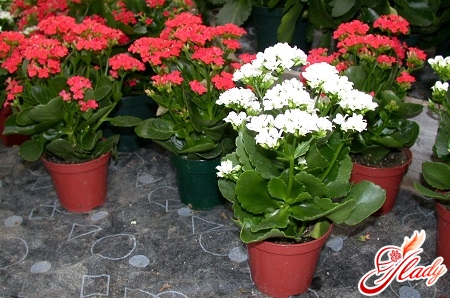
Shielding and Falsework
The shields belong to the suborder of coccids andThey are insects with an elongated two-millimeter body, which is covered from above with a wax shield. Female are much larger than males and have neither wings nor legs. They sit still, covering themselves with eggs. The plant affected by scabbards is covered with a peculiar bloom from the accumulation of insects. The leaves begin to turn yellow and fall, the growth of the Kalanchoe slows down, the flowering stops. The condition of the plant deteriorates because of the additional defeat of the black fungus, which multiplies in a sticky secret, secreted by scutes. Pests are kept mainly on the underside of the leaves. Only young larvae are able to move, adults are immobile. To prevent this disease, the plant should be inspected regularly and carefully. And at the end of winter and early spring, make sure that the Kalanchoe is in a well-ventilated room. If the air temperature allows, spray the plant more often with water - the scabbards do not like the wet environment. Ways to fight with the shield The insects must be collected from the leaves, and then washed with soapy water. To make the panels easier to remove, they pre-treated with alcohol. There are no special insecticides to fight with scutes, so any preparation intended for indoor plants can be used. You can fight pests and folk remedies - regularly (3-4 times a week) wipe the plant with cotton wool soaked in vodka or diluted alcohol. Remove the scabbards with an old toothbrush. You can also wash the plant with infusion of garlic. In a mortar, grind 5-6 cloves of garlic and pour a glass of water. Insist the resulting mixture in a dark place for several hours, filter it and spray the plant.
Why do leaves fall on the Kalanchoe?
All the growers want the Kalanchoe to alwayspleased the eye with green leaves. But it happens that the stem of the plant is stretched, and the lower leaves begin to turn yellow and fall off. This behavior indicates incorrect lighting - it just does not have enough sunlight. Sometimes this trouble occurs after flowering: growth stops, the flower begins to lose leaves. All this happens when the Kalanchoe is exhausted. He urgently needs a transplant or a good fertilizing. Leaves die in the cold season. This is due to the proximity to the central heating. Most likely, the plant stands on the windowsill near the battery, and the air around it is too dry. Transfer the flower to a room with a lower temperature. Optimal at this time of year is a temperature of about 13-15 degrees, then the Kalanchoe will overwinter without losing the green mass. The main thing is that at a lower temperature there is no excess moisture, otherwise it will be necessary to treat the plant against mold, which is manifested in the form of black or brown spots. In general, caring for Kalanchoe, it is important to trim the old shoots in time, then it will please you for a long time with its beautiful form and abundant flowering. 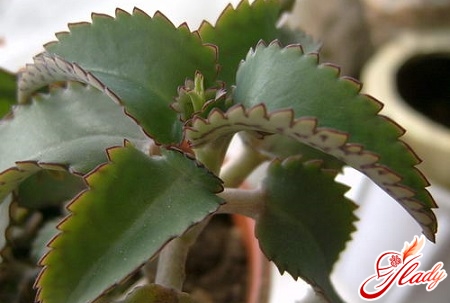
Other diseases of Kalanchoe
- Phytophotose rot
Signs of this disease are necroticbrown spots in the places of ramification of the Kalanchoe. Many factors provoke rot, for example excess watering or poor ventilation. Possible excess fertilizer in the soil or too high a temperature content. Upon detection of this disease, watering is stopped and the plant is provided with a partial soil change. In the future, for some time, the Kalanchoe must be watered with fungicides.
- Powdery mildew
Symptoms of the disease: on the leaves of the plant, it is possible to detect specific spots with a white fungus coating. Depending on the development of the disease, the leaves die. The danger is that the fungus that causes mildew, is safely transmitted through the air and can infect adjacent plants. The disease develops in conditions of dry air and elevated temperature. For the fight, regular watering (but not frequent!) And spraying with fungicides are necessary.
- Gray rot
It is accompanied by education on the above-ground partsplants wet gray spots. If you do not take measures, the spots grow, turning into a mushy mass, and the plant dies. The fungus causing the disease has been preserved in the soil for another two years. To activate it requires excessive moisture, lack of lighting and poor ventilation. When detecting a disease, it is necessary to urgently change the conditions of detention and take care of adequate lighting and replacement of soil. And also treat the plant with systemic fungicides. As you can see, all the diseases inherent in Kalanchoe, can be cured. The main thing is to find them in time and take appropriate measures.




